We were maybe 10 minutes down the trail when Nancy Sferra made the announcement. “We’re now officially in old growth.”
A few steps had taken us from one type of forest, a young one, to a much older one. It took a few moments for the mind to grasp the differences. Big trees, widely spaced. Sugar maples two feet in diameter, their bark deeply fissured and dotted with lichens. Yellow birches so big and old the brassy, peeling bark of youth had turned gray and furrowed. The size of the standing trees was matched by the size of the trees on the forest floor. Silvered, mossy boles scattered through the woods.
The beginning of Henry Wadsworth Longfellow’s epic poem Evangeline leapt to mind:
This is the forest primeval. The murmuring pines and the
hemlocks,
Bearded with moss, and in garments green, indistinct in the
twilight,
Stand like Druids of eld, with voices sad and prophetic, Stand like harpers hoar, with beards that rest on their
bosoms.
It wasn’t so long ago that the forests of Maine, and the entire eastern United States, looked something like this.
We were in Big Reed Forest Reserve in northern Maine, a couple of hours by gravel road northwest of Baxter State Park. It is 5,000 acres of not just old-growth forest, but virgin forest – forest that has never been logged. It is the largest contiguous piece of old growth east of the Mississippi River and contains two-thirds of New England’s remaining old growth, according to the Sierra Club Guide to the Ancient Forests of the Northeast.
I had come here because I wanted to see what a true old forest looks like. I was in the company of Sferra, the stewardship director of the Maine Chapter of The Nature Conservancy, and Andrew Cutko, the chapter’s director of science. Sferra needed to make a periodic inspection of the two rustic pond-side cabins the Conservancy leases to a sporting lodge; Cutko simply wanted to visit the reserve again. His first visit was memorable, but mainly because it had poured rain.
We were hiking in on a rough fisherman’s trail – the only one in the entire reserve. It’s not maintained, and we were constantly clambering over or skirting fallen trees to pick up the rough path on the other side. And we continued to marvel at the size of the trees. One hemlock Cutko estimated to be 250 years old. He considered coring the tree to zero in on its age, but decided it wasn’t a good candidate: “I’m not sure if our corer is big enough for that one, honestly,” he said.
Some people, Sferra noted, might not be all that impressed with Big Reed’s forest. The trees are big, but not as big or as ancient as the trees in the Pacific Northwest, where sequoias can reach 300 feet and live for 3,000 years. Historically, the tallest tree in Maine was the eastern white pine. And a tall white pine back in the 1600s, say, might go 200 feet. Still, these trees are a lot bigger, and a lot older, than those in the rest of the Maine forest.
“That’s a pretty nice spruce,” someone said. Sferra estimated its diameter at 30 to 32 inches; Cutko puts it at 26 to 28. “I should have brought a diameter tape,” he said. He pulls the corer out of his pack. It resembles a shiny T-shaped hand auger. The boring end will carve out a cylindrical core a quarter of an inch in diameter. A semi-circular insert will then be slipped inside and used to draw out the pencil-sized core. “That’ll take Andy about 10 minutes to core and count,” said Sferra. “Spruces are not hard. If it was a sugar maple we’d be here a while.”
As Cutko turned the corer, we guessed at the tree’s age: Sferra puts it at 280, me at 150. When Cutko was done counting rings, he put the tree’s age somewhere in between, at around 200 years, give or take, since it’s hard to get an exact ring count on a tree that old with just a hand lens. Cutko said he’s cored Big Reed spruce at 300 years, “but they’re rare.” By comparison, the average age for a red spruce in the rest of Maine today is probably around 60 years, he said.
CAUGHT OUT OF TIME
Big Reed feels old, and it’s not just because of the imposing, ancient trees. There are no traffic sounds. No growl of chainsaws. No skid trails or logging roads. Big Reed is about as remote as any place in Maine, psychically and geographically. The Conservancy doesn’t do anything to encourage visitation. There are no how-to-get-there instructions on the chapter’s website. The group does thoughtfully stash a couple of aluminum canoes for public use (warning: bring your own paddles).
We ate lunch at the pond, where the public canoes are stored. The pond itself is 96 acres, unremarkable, really, and virtually indistinguishable from a zillion other ponds in Maine. The virgin forest around it and the blue-backed trout in its depths, however, make it unique. After lunch we took a boat and paddled hard, bucking a stiff headwind across the pond, on the way skirting a huge dead tree lurking just beneath the water’s surface like a woody Loch Ness monster. We landed at a small cove with a weathered dock. A couple of log cabins sat farther up in the woods, creating a frontier scene straight out of the early 1800s. Save for the green outhouse of treated OSB. Sferra seemed fine with the condition of the camps, documenting a couple of things with her iPad’s camera. The cabins are leased to Bradford Camps on Munsungan Lake, whose pilot owner flies fishermen in and out in a floatplane for one-day or multi-day fishing trips. Big Reed Pond’s blue-backed trout, a fish rare in Maine, are the draw. The fishery was endangered when someone illegally introduced rainbow smelt into the pond, but the state reclaimed the pond and reintroduced the blue-backs in 2011.
Cutko peered through the windows of one of the cabins. “This would indeed allow you to get away from it all, wouldn’t it?”
When it comes to old-growth forest, there’s debate about what the term actually means. There are purists who say that only forests like Big Reed’s, which have never been harvested, qualify. Others argue that the term should be applied more broadly to forests with old trees and old-growth characteristics, even if they were harvested 100 or 200 years ago.
By the purist metric, Big Reed constitutes 75 percent of the old-growth forest in Maine. (This number does not include subalpine dwarf old growth, which for practical reasons have never been harvested.) The rest of the old growth is scattered among 82 sites, averaging 20 acres each. So the thousands of contiguous acres at Big Reed truly are unique.
Big Reed’s trees escaped the ax and, later, the chainsaw, more through accidents of timing and geography than through any intentional preservation, said Sferra. There weren’t a lot of huge pine, the highest-value trees in the mid-1800s, on the site. When big spruce became sought after later in the century, it was apparent that getting them out of the Big Reed Pond basin was just too much of a chore: the outlet stream wasn’t big enough to drive logs down. So they remained untouched for years.
This untouched acreage eventually grew to assume a special place in the hearts of the people who owned it – the descendants and heirs of timber baron David Pingree – and they didn’t go after the wood.
We left the old cabins behind, curved around Big Reed Pond and headed toward the summit of Big Reed Mountain, an unimpressive hump that Sferra said would offer us no expansive views, but that seemed as good an objective as any. She guided us along with GPS on her iPad, but we could occasionally catch glimpses of the pond on our right.
It wasn’t easy bushwhacking through this forest. The trek took us through several old beaver bogs, wet and, well, boggy. You didn’t have to be Sherlock Holmes to pick out the beaver sign: the forest was studded with beaver-chewed stumps three to four feet tall, the height presumably governed by snow cover when the rodents were gnawing away.
The hike showcased for us one of the classic characteristics of a virgin forest: downed trees. Big downed trees. Lots of them. Piled sometimes in layers. In some instances we weren’t so much hiking as clambering over dead giants, most of them covered in deep layers of cushiony moss and slowly giving themselves back to the earth.
Another thing we noticed traipsing around Big Reed is what’s not there.
There are no aspens, for instance. No white or gray birch. No black cherry. In other words, none of the early successional species that are common in the woods across Maine where forests have been logged repeatedly, or where abandoned farmland has grown up to forest.
There are also almost no big American beeches. And no big balsam firs. The big beeches were felled by beech bark disease – a malady that came to North America from Europe in 1890 and by the 1930s was killing beeches in Maine. The big firs, and many big spruces, were probably lost in the 1916-1921 budworm outbreak. Today the bulk of what’s left is spruce and sugar maple with a significant amount of cedar, understory beech, and yellow birch.
We continued around the pond, again climbing over downed trees through woodland populated by their towering, still-living relatives. Just over a hump we descended into a forest of big cedars and spruces in a miniature valley that looks like something out of The Lord of the Rings. To our right was the pond, to our left another silted in beaver bog.
Cutko dropped his pack and pulled out the corer again. He began tapping on trees with the handle, sort of like using a knuckle to test watermelons for ripeness. While a hollow-sounding watermelon bodes well for your picnic, with trees it’s the opposite. It means the heart of the tree is rotten and the corer will only yield sawdust.
Tap, tap, tap. Tap, tap, tap. “This one is pretty hollow,” Cutko said. “Cedar tends to be hollow. It’s pretty much of a crapshoot.” He switched trees. “This one is a little better.” He tried a couple, but got mush part way in. Back to tap, tap, tapping. “I just might have to switch to spruce,” he said.
Tap, tap, tap. “That sounds better,” said Sferra. Cutko cored a venerable cedar some 32 to 34 inches in diameter. Through Cutko’s hand lens the core showed 226 rings, but again the heart was rotten, so we could only hypothesize as to the tree’s impressive age.
Sferra took on the task of coring a spruce while the guessing game went on. The core showed 154 rings. “It was a very fast-growing tree,” said Sferra, looking at the core through the hand lens. “But there was one section here where it was slow-growing, and another here.” The spruce wasn’t particularly tall, certainly not by sequoia standards. Cutko, bending backward, estimated 85 or 90 feet. “But it’s a large spruce.”
AGE-OLD QUESTIONS
The king of coring trees in Big Reed Pond Preserve has to be Shawn Fraver, who also has probably spent more time there than anyone else.
Fraver, now a professor at the University of Maine’s School of Forest Resources, spent a significant chunk of six years working at Big Reed while doing research for his doctorate on the historical disturbances that influenced the development of Big Reed’s old-growth forest.
As part of that research Fraver cored 3,300 trees. And as he will tell you, coring trees not just to get a quick idea of age but to really learn in detail about their history and the history of their environment – dendrochronology, it’s called – is not a simple task. To get the most out of the long, slender, fragile cores you have to bring them back to the laboratory, polish and sand them, and examine them under a microscope to determine growth rates, he said.
“It’s almost impossible to determine the age of a tree by coring it,” he said. “If you treat the core properly what you get is the number of rings at breast height, but you don’t know how long it took to get to that height. For some shade-tolerant species it’s hard to get an actual age, because it might take decades for them to get to breast height.”
That being said, Fraver did publish tree-ring data in his dissertation. The oldest spruce he cored in Big Reed had 352 rings, the oldest white cedar 329, and the oldest sugar maple 315. He found a yellow birch with 249 rings, a beech with 210, and an American hophornbeam with 281. That last species really stood out. “That’s surprising to people because the tree (also known as ironwood) never gets very big. They’re slow growing and they’re in the understory. I only cored 33 of them,” he said.
Fraver’s research involved coring trees from 36 research plots representing all the major forest types found at Big Reed. “I probably have seen more of that preserve than anyone else,” he said matter-of-factly.
He concluded that Big Reed’s disturbance history was mainly one of small gaps being formed in the canopy and “every so often a pulse of disturbances that might take up to 20 to 30 percent of the canopy.”
The primary disturbance factor, he said, was wind.
“Primarily summer thunderstorms, not winter windstorms,” he said. The winds could be from microbursts. Some corresponded to major hurricanes. The other major disturbance was from spruce budworm. “Based on the record we reconstructed into the past, there were five major budworm outbreaks and they were all equal in severity,” he said. Balsam fir were especially vulnerable. Fraver found one balsam fir that cored out at 146 years. “That’s pretty old for that species,” he said.
He found no history of fire, but said that makes sense. “I think it surprises a lot of people, but fire is not a prime disturbance agent in northern New England’s forests. We have high precipitation evenly distributed throughout the year and fewer lightning strikes than in other areas of the country,” he said.
Fraver admitted that working in Big Reed wasn’t easy, but he said he has fond memories of those years. “It was physically difficult, but despite that I really loved working up there. The insects were among the worst I’ve ever seen, the black flies in particular. But it is a really special place. It was a privilege to work there.”
READING THE LANDSCAPE
Lissa Widoff was a field biologist in her 20s when she came to Big Reed Pond in the 1980s to organize field teams doing an assessment in advance of a possible purchase by The Nature Conservancy.
She bunked in one of the cabins on the shore of the pond with other team members, putting in 10 days or two weeks at a time before returning to civilization for a few days. The researchers spent up to 10 hours a day in the woods, following transects – compass bearings across the landscape – while noting observations as they went. It made for long, tiring days, “especially if you wanted to get to more remote parts of the preserve,” Widoff said. “Our basic aim was to map and describe the area as a whole in terms of what kinds of smaller habitats existed, as well as looking for rare plant communities and assessing the overall dynamics of the place.”
In a sense it was standard field biology work, but in Big Reed there were moments where it hit home that this was a different kind of place. “To traverse areas hit by wind or other natural disturbance, mature trees were fallen like pick-up sticks. You could be walking a fallen tree trunk 12 to 15 feet above the ground,” she said. “The scale of some of these natural disturbances included very important lessons. It also taught us that the stereotypical image of an old-growth forest of stately cathedral-like trees is more of a myth. It’s a much more dense and tangled experience.”
“Every day there were surprises,” she said. And every day the scientists got more intimate with the land. They would marvel over the little sheltered spots, microhabitats where the soils were richer trip back across the pond was literally a breeze – thanks to the brisk tailwind.
It’s amazing, when you think about it, that the Big Reed tract of virgin forest has been right here for centuries, but virtually no one has known of it. Kind of like a believed-to-be-extinct species found along the roadside in a suburban neighborhood. Hiding in plain sight.
The Pingree family knew about it, of course, because they owned the land and had done timber cruises and visited the camps on the shore of the pond, said Barbara Vickery.
Vickery, now retired, spent decades with The Nature Conservancy and was involved in the Conservancy’s acquisition of the property.
The Pingree heirs knew the tract was special because of its untouched nature, and had left it that way. But there came a time in the 1980s when they felt like they couldn’t afford not to harvest, she said. But they didn’t want to. And so they reached out to the Conservancy.
At the time, said Vickery, the chapter was focused on identifying and protecting important habitat for rare species or exemplary natural communities. Most preserves were smaller and on or near the coast, especially islands. But the chapter was interested, no doubt about it. That’s when it hired Charles Cogbill, an ecologist and expert on the pre-settlement forest in northern New England, to look at the records and “figure out how this could be true – that thousands of acres could have gone uncut and nobody knew about it.”
Cogbill researched the tract’s history and spent time on site, ultimately concluding that “without evidence to the contrary, the old-growth nature of this area cannot be denied.” Once they got Cogbill’s report, Conservancy staffers “became a lot more confident” that not only was it true, but it was important, even though there were no rare habitats or rare species there, she said. The fact that the forest had never been cut was itself a reason to protect it.
Vickery was conservation programs director at the time. She remembers talking with the first Conservancy staff to visit Big Reed. They described a very messy forest of big, but not huge, trees, many damaged, lots of trunks on the ground, and “‘oh, by the way, we spent a whole day wandering around this place and didn’t see a single aspen or cherry and hardly any birches.’ Then the difference between that and the surrounding forest became apparent.”
When Vickery saw for herself the hummock and hollow mounds characteristic of old growth, and later flew over the parcel when the leaves were off the trees and looked down to see the forest floor littered with layer upon layer of giant logs, “piled up just like matchsticks,” she quickly realized what an unusual place it was, even if it lacked rare plants and the old growth timber really wasn’t in great condition or “worth that much,” as a forest appraiser noted.
In the end it was a huge, complicated deal. The first part, for 3,800 acres, was a three-way transaction involving land swaps with the state and the Pingree family. It required raising $1.1 million, the largest amount the chapter had ever raised for a single purchase by far. The sale was completed in 1987. No sooner had that been finalized than they negotiated a second purchase of 1,013 acres that brought the total to nearly 5,000 acres, protecting the entirely of the Big Reed Pond watershed.
That purchase was completed in 1990; the price: $287,000. There was more old growth beyond that, on the north and west sides of the new reserve. Vickery championed the idea of buying that, arguing that this uncut forest needed a bigger buffer from the managed forestland around it. But a third purchase never came about. Vickery still regrets that.
Vickery believes the Big Reed project not only allowed the Conservancy to become the owner of the largest tract of old growth forest in the east, but also changed how it viewed conservation in Maine. Expanded its horizons, so to speak. In the years since, the chapter has taken on projects in interior Maine that dwarf Big Reed several times over in terms of acreage and cost: as just one example, the 185,000-acre St. John River Forest was a $35 million buy.
A couple of years ago Vickery went back to Big Reed, on the same rainy trip Cutko went on. It had been a long while. And one of the things she noticed was that the forest had changed. Beech bark disease had taken its toll and the big old beeches had come down. It changed the feel of the forest, she said. This same-yet-different forest was a reminder that everything changes, even places that seem like they should exist out of time. And Vickery thought again of how it is important to have places in the natural world where we can simply observe how things play out without our interference, without our attempts to manage things and play the master puppeteer, pulling the myriad strings.


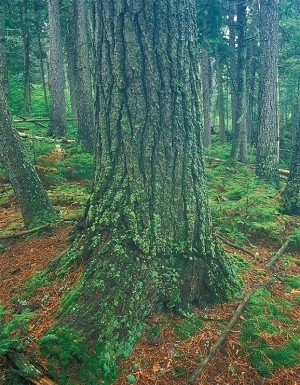
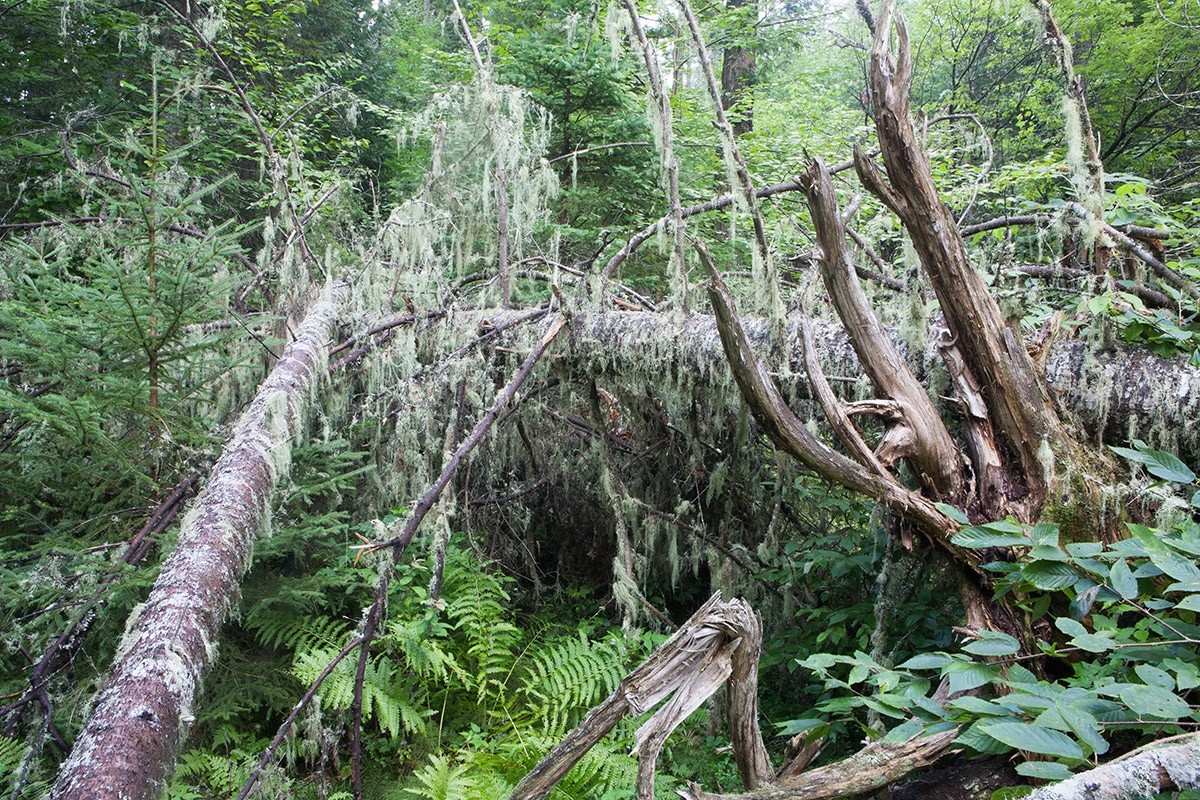
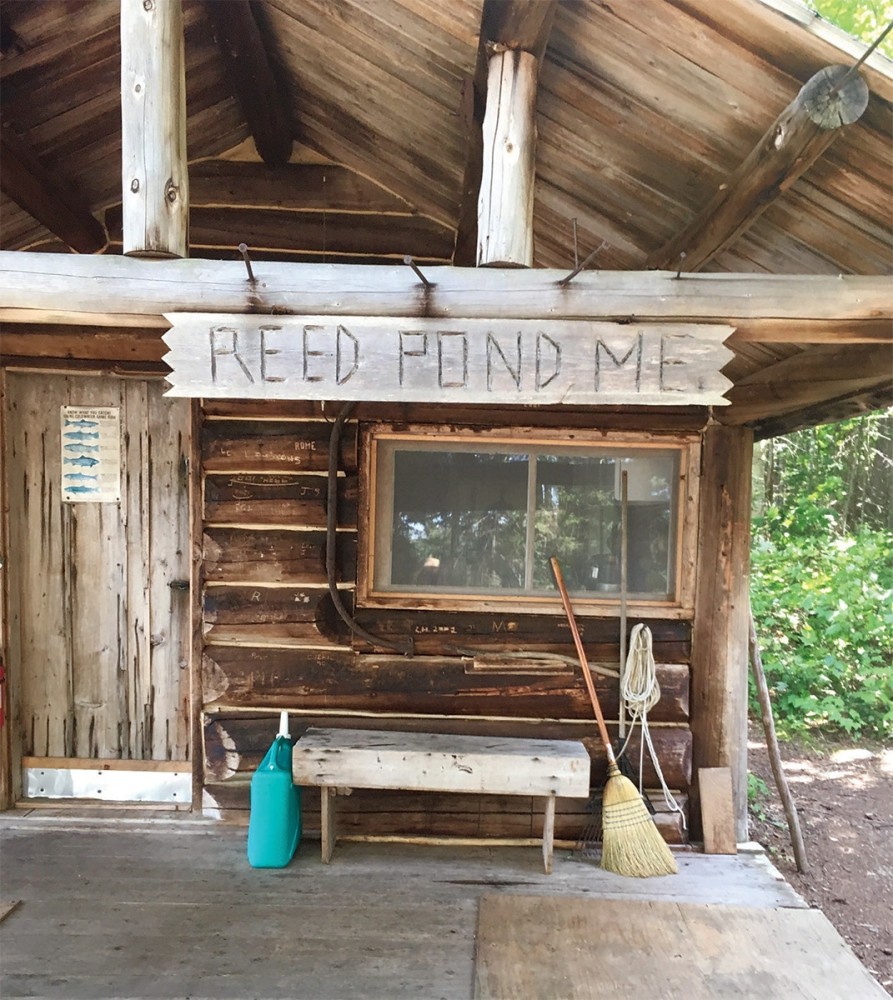
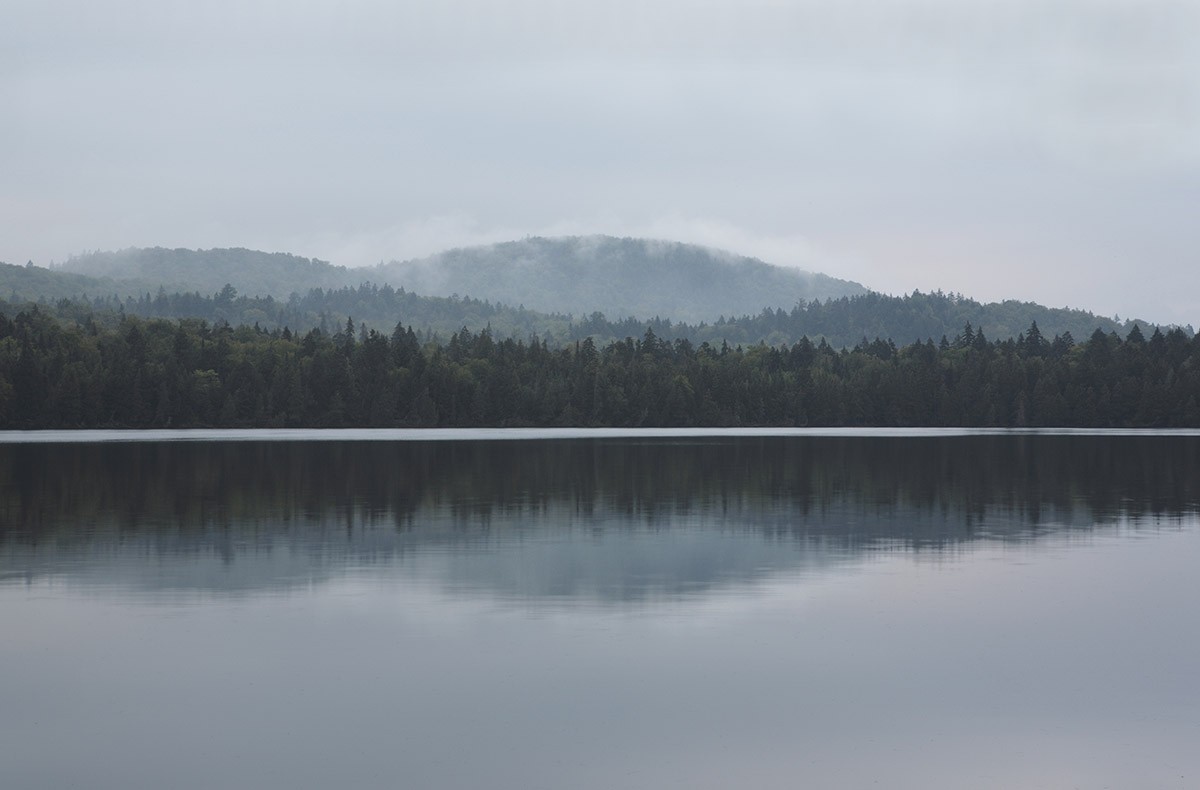
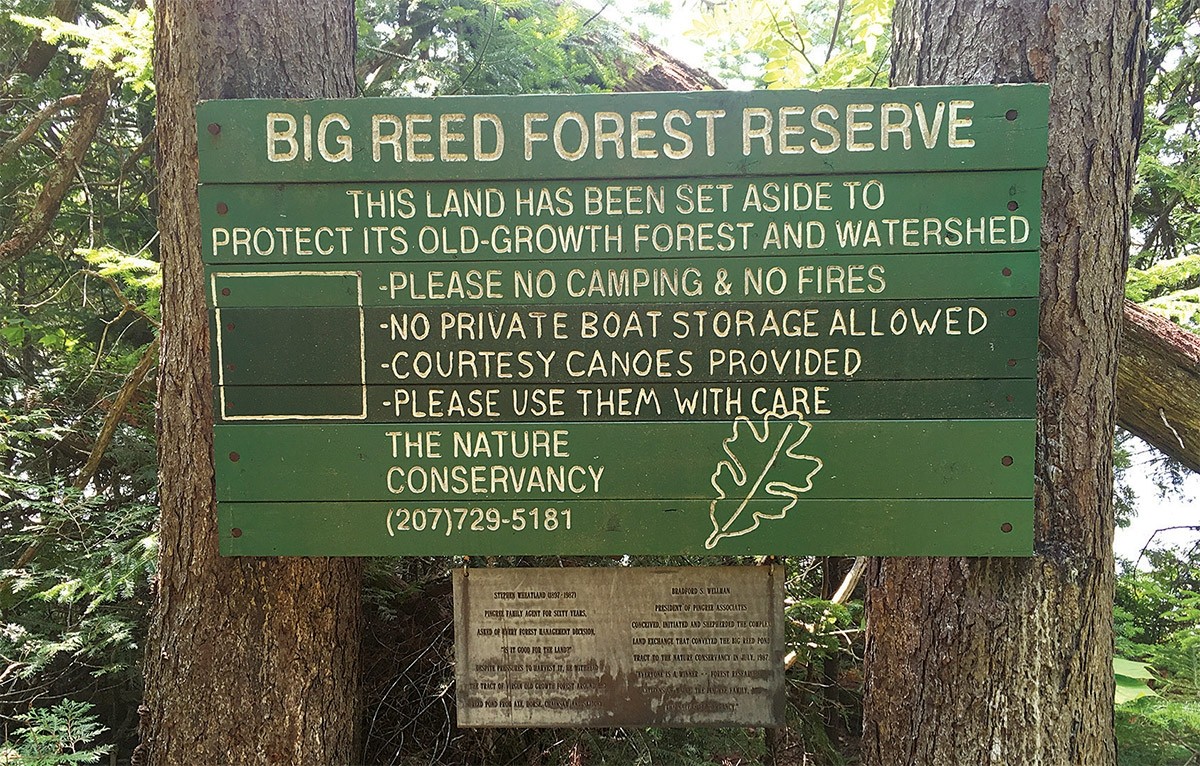
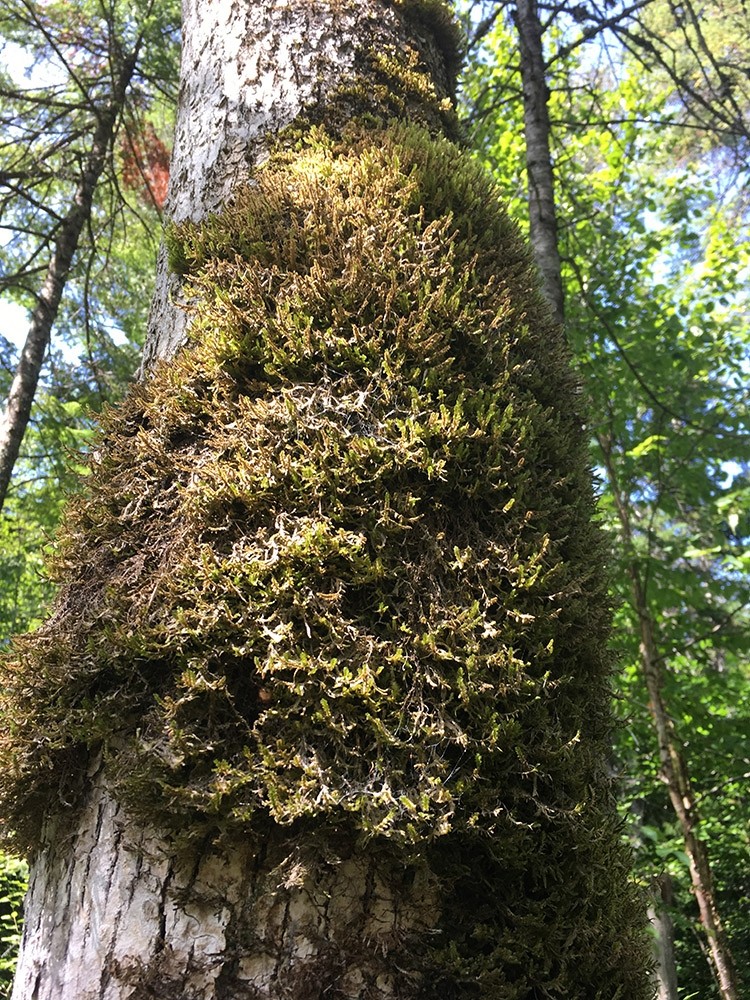
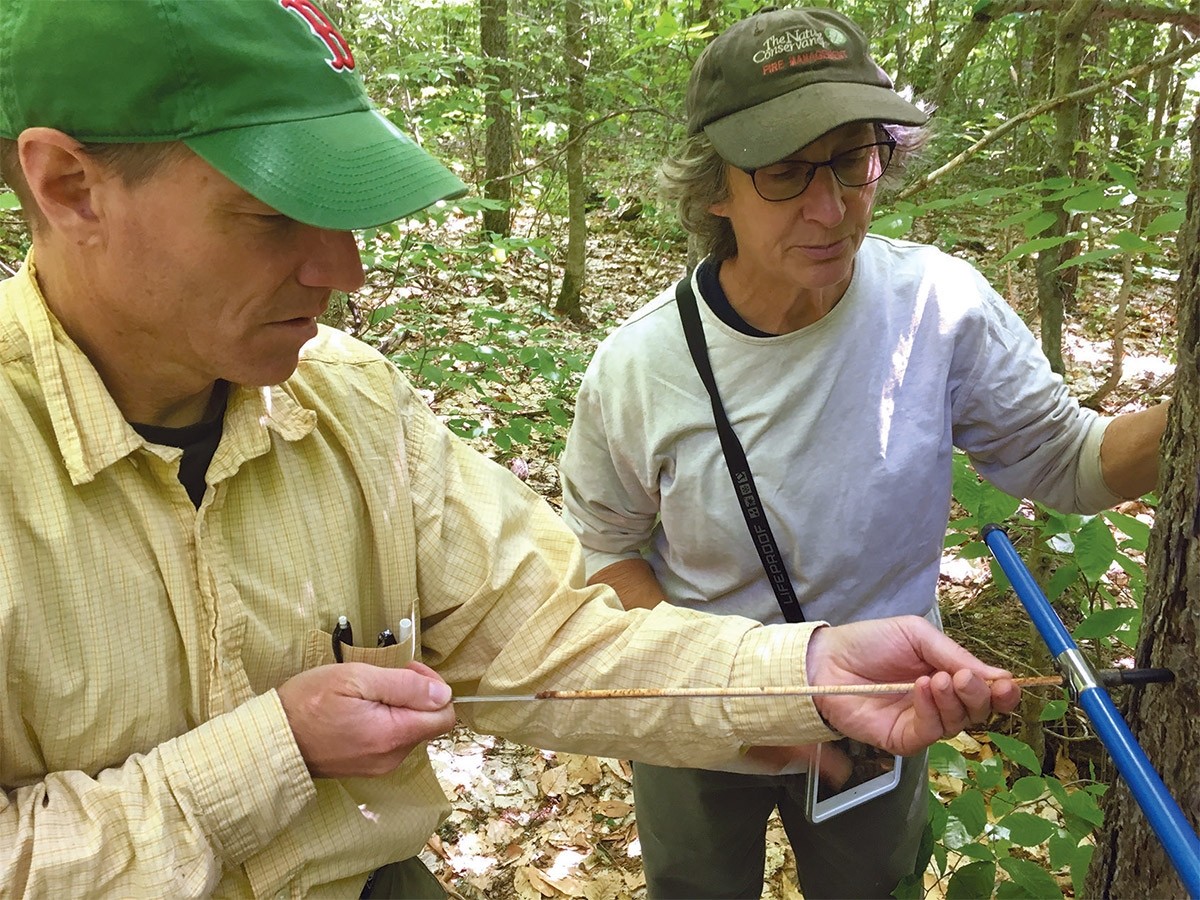
Discussion *